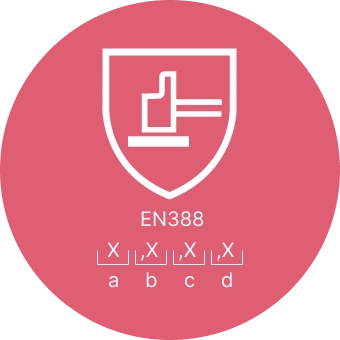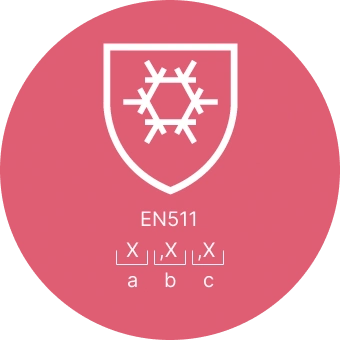EN388 & EN511 Protection against mechanical risks & cold environments
Glove certification explained
The EN388 standard is determined by four parameters (a,b,c,d) all detailed below:

EN388
a. Abrasion resistance
This tests how many revolutions it takes to create a hole, with an abrasive material under a stipulated pressure. Rated from (1-4), 4 being the most resistant.
b. Blade cut resistance
This tests the number of cycles for a blade, running at a constant speed to cut through the material. Rated from (1-5), 5 being the most resistant.
c. Tear resistance
This tests the amount of force (n) required to tear the glove. Rated from (1-4), 4 being the most resistant
d. Puncture resistance
This tests the amount of pressure required to puncture material with a standard size point. Rated from (1-4), 4 being the most resistant
EN511
a. Resistance to convective cold
This measures the transfer of cold via convection and is rated from (0-4), 4 being the most resistant
b. Resistance to contact cold
This measures the thermal resistance when the glove is in contact with a cold object. Rated from (0-4), 4 being the most resistant.
c. Water Permeability
This measures the glove's resistance to water penetration. -water penetration rated as (1) no water penetration rated as(0)

Do you need certified gloves?
View our collection of certified gloves for general purpose, warehouse, chillers and freezers




